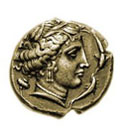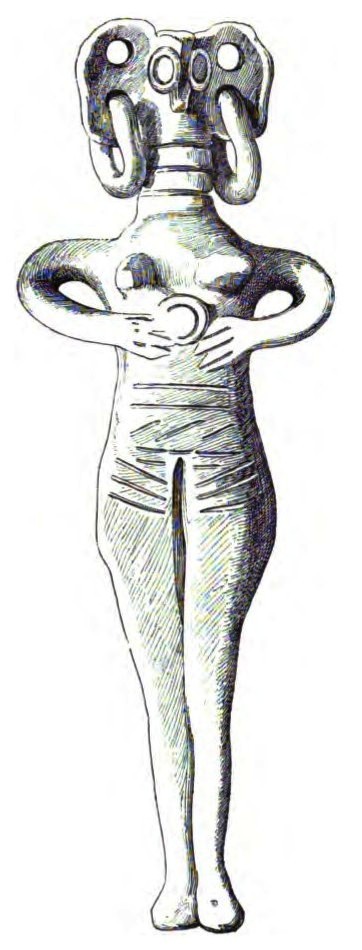
|


In
the beginning was the equation. It was born over three centuries ago,
when mathematicians said that it described a beautiful curve:
The surprising child of distinguished parents, the curve of exponential growth, and its companion
curve of exponential decay, by taking equal parts of one and the other.
Mathematicians called the curve described by their curve a catenary. Because - they said - it was the shape of a
hanging chain, or a string of beads. Scientists said, if you take that catenary, and flip it over, it will make a perfect
arch. Along came an architect who said, I have a vision of a magnificient arch that will be light and slender at
the top, and will be strong and sturdy at its base, and will last as long as the arches built 2,000 years ago in Rome,
and still standing today, and - may be - as long as the great pyramids, built 3,000 years before that. The engineer said,
yes, we can do that. I will tweak your equation, and flatten your catenary, and I will tell you exactly how much to slim it
down - from bottom to top. Then you will have a bright leaning arch that will reflect the white fluffy clouds and the blue
sky. Planes will fly over it, birds will fly around it, and children will frolic.
So, the architects, and the engineers, took the mathematicians' equations, and made drawings, and great columns of numbers,
and took them to the steal-makers, and the construction crews. The dream became a reality: A thing of beauty, and a joy for
at least a very very long time.


Problema Isoperimetricum
Problematum Ifoperimetricorum



Selection of Key Full-Text Papers (Chronological)
-
IMAGES.MATH.CNRS: L'inégalité isopérimétrique
- Y. Burago:
The classical isoperimetrical inequality
- Y. Burago:
The Isoperimetric Inequality in Geometry and Physics
-
J. Steiner:
Einfache Beweise der isoperimetrischen Hauptsätze. Journ. Reine u. angew. Math. 18, (1838), 289-296.
- J. Steiner: Sur le maximum et le minimum des figures dans le plan, sur la sphère, et dans l'espace en général,
Journal für die Reine und Angewandte Mathematik, vol. 24 (1842), pp. 93-152.
- M. D'Ocagne: Sur certaines figures minima. Bulletin de la Société Mathématique de France, 12 (1884), p. 168-177
-
J. P. Kahane: Léopold Fejer et l'analyse mathématique au début du XXe siècle
-
H. Minkowski: Allgemeine Lehrsätze über konvexe Polyeder. Nachr. Ges. Wiss. Göttingen (1897), pp. 198-219.
-
A. Hurwitz: Sur quelques applications géométriques des séries de Fourier. Ann. École Norm. Sup. (3) 19 (1902), 357-408.
- Henri Lebesgue: Sur quelques questiones de minimum, relatives aux courbes orbiformes et sur leur
rapports avec le calcul des variations, J. Math. Pures App., 4(8) (1921), 67–96.
-
Jean Favard: Problèmes d'extremums relatifs aux courbes convexes (Premier mémoire), Annales Scientifiques de l'E.N.S., (1929), pp. 345-369.
-
Jean Favard: Problèmes d'extremums relatifs aux courbes convexes (deuxième mémoire: "les couvercles"), Annales Scientifiques de l'E.N.S., 3e serie, tome 47 (1930), pp. 311-324.

-
L. Tonelli:
Sull'esistenza del minimo in problemi di calcolo delle variazioni. Annali della Scuola Normale Superiore di Pisa - Classe di Scienze, Sér. 2, 1 no. 1-2 (1932), p. 89-99.
-
L. Tonelli: Sulle equazioni di Eulero nel calcolo delle variazioni. Annali della Scuola Normale Superiore di Pisa - Classe di Scienze, Sér. 2, 4 no. 2 (1935), p. 191-216.
-
L. Tonelli: Sulle proprietà delle estremanti. Annali della Scuola Normale Superiore di Pisa -
Classe di Scienze, Sér. 2, 3 no. 2 (1934), p. 213-237.
- L. F. Toth: Approximation by polygons and polyhedra,
Bull. Amer. Math. Soc. Volume 54, Number 4 (1948), 431-438.
-
- Y. Komatu, Isoperimetric Inequalities,
Journal of the Mathematical Society of Japan, Vol. 2, No.1-2 (1950), pp.57-63.
- H. Hadwiger: Leçons sur le volume, la surface et le problème des isopérimètres (1969)
- Intuitive Geometry, in Memoriam László Fejes Tóth
-
L. Fejes Tóth, Isoperimetric problems concerning tessellations, Acta Math. Acad. Sci. Hungar. 14 1963 343--351.
-
L. Fejes Tóth, What the bees know and what they do not know, Bull. Amer. Math. Soc. 70 (1964), 468-481.
- A Dido Problem as modernized by Fejes Tóth
- Robert Osserman: The isoperimetric inequality,
Bull. Amer. Math. Soc. Volume 84, Number 6 (1978), 1182-1238.
- Robert Osserman: Bonnesen-Style Isoperimetric Inequalities, The American Mathematical Monthly, vol. 86, 1979, pp. 1-29.
History of Science Essays
-
Histoire des mathématiques. Traduit sur la 3. éd. anglaise par L. Freund (July 1906)
- From nature that economizes to generous forces: the principle of least action between mathematics and metaphysics, Maupertuis and Euler, 1740-1751
-
La Géométrie de l'infini et ses commentateurs de Jean Bernoulli à M. de Cury (1957)
- Roshdi Rashed: Infinitesimals Mathematics between the 9th and 19th century: Founders and Commentators: Banu Musa, Ibn Qurra, Ibn Sinan, Al-Khazin, al-Quhi, Ibn al-Samh, Ibn Hud, et Ibn al-Haytham
-
Rashed Roshdi, Les mathématiques infinitésimales du IX:
Ibn al-Haytham et l'isopérimétrie
-
Rashed Roshdi, Les mathématiques infinitésimales du IX (1996)
Selection of Available Full-Text Books
Euler (1707-1783)
Jakob (also James or Jacques) Bernoulli (1654-1705)
Galileo Galilei (1564-1642)

"Veni, Vidi, Vici" ("I came, I saw, I conquered"). Sketches of the double-walled city of Tunis and its surroundings from three different eras: Exactly on 31 August 1535, then from the mid-1600s and mid-1700s periods. The first is a commemorative woodcut carving by
Erhard Schön
(1491-1542) celebrating the conquest of Tunis by the Holy Roman King Charles Quint. The carving, in German, reads: "
Actual View of the Castle and the City of Tunis [Thunis], Including the Fortress Goleta, in Africa.
The text following Julius Caesar's triumphant invocation reads:
``The most Christian, most mighty, and victorious emperor Charles, the ruler of all of us, departed personally with an Armada, not seen in Christendom in many centuries, from Barcelona in Catalonia on May 31, and from Calari in Sardinia on 14 June. With favorable wind, he arrived in the kingdom of Tunis in Africa on the following day. On June 21 he stepped on land at the place known in antiquity as Carthage. He bombarded many gates, bastions, and hills, as well as attacked the overly strong fortification, known as Goleta, on July 14 gaining a divinely marvellous victory with the loss of only forty Christians horsemen, and conquering a vast number of vessels and cannon, etc. He also took on the following July 21 the royal castle and the city of Tunis with God's help, quite without losses, and plundered it. He drove out the Turkish [emperor's] Solyman's foremost captain and lieutenant at sea, called Barbarossa, with all his helpers from the kingdom of Tunis.../ Printed at Nuremberg, the imperial city / M./ C.S.D./ 31 August 1535.''
The second is "Plan de la ville de Tunis et de ses environs, c. 1740-1749" map by Jacques-Nicolas Bellin (1703-1772). The third is description of the inner fortification of "la citadella
di Tunisi" from an Italian source (dated around 1600-1699). Both are from the "Collection d'Anville",
Bibliotheque nationale de
France.
|
|

